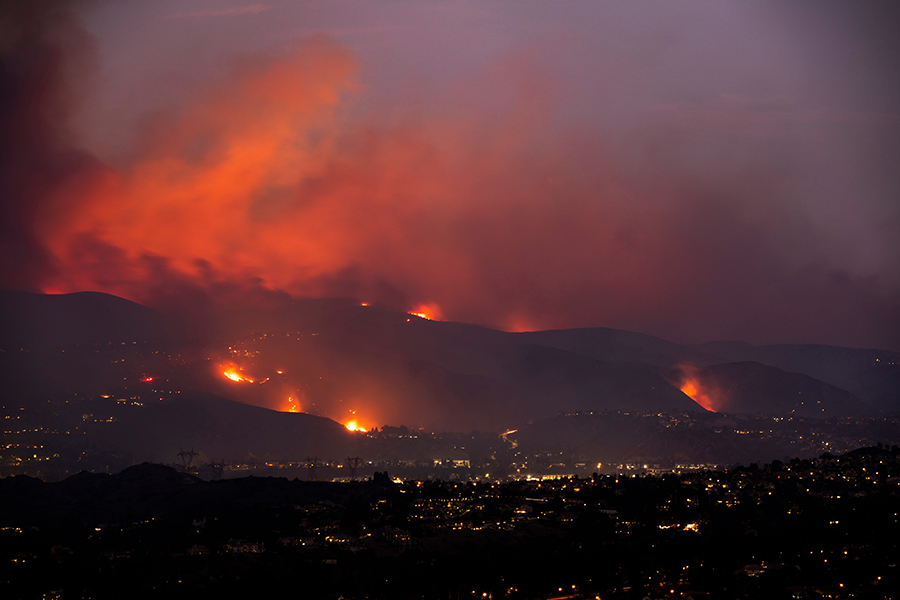
Dry Santa Ana winds have fueled devastating wildfires in the Los Angeles area. The excessive damage began Tuesday and has continued into Thursday, putting at least 130,000 residents under evacuation orders as of Thursday morning.
Five major fires have caused over 400,000 power outages, with the Pacific Palisades fire just west of Los Angeles being the most destructive in the city’s history as an estimated 1,000 structures were destroyed.
Florida State University Professor Kevin Speer is the director of the Geophysical Fluid Dynamics Institute. He is an expert in climate change, from global ocean circulation to the dynamics of hydrothermal plumes.
According to Speer, there are four main factors contributing to the Los Angeles wildfires:
Fuels: California has always had a seasonal cycle that produces drier conditions in the grassy chaparral, which fuels conditions associated with fire risk. These have become more intense in many locations over the years with shifts in temperature and rain patterns.
Land use and zoning: It is more expensive to build or renovate houses and buildings to make them ember-proof and eliminate the most flammable vegetation. But law and zoning regulations need to be changed to drive the housing market in this direction and to provide incentives for homeowners, banks and insurance companies to incorporate the real risks into property value.
Ignitions: Fires get ignited for all sorts of natural and human-caused reasons. Speer says Americans need to move away from seeking blame to blaming ourselves for not developing responsibly.
Meteorology: The situation in Los Angeles is linked to atmospheric conditions that drive strong wind flow over the tops of the coastal mountain range. These conditions were predicted, and some fires that could have grown were extinguished. But it was almost inevitable that some get out of control when winds are higher than 30 mph and more variable in speed and direction. This situation is not the usual downslope and downcanyon Santa Ana winds but involves air flow in mountain waves that amplify the wind speed. This is atmospheric fluid dynamics at work.
Media requesting interviews about the broad impact of the current wildfires in Los Angeles can reach Professor Speer via email at kspeer@fsu.edu.
AccuWeather reported that the damage from the Los Angeles wildfires is expected to reach about $57 billion.
Charles Nyce is the Dr. William T. Hold Associate Professor of Risk Management & Insurance at FSU. He is an expert in catastrophic risk financing and has authored numerous articles on risk management and insurance topics, including title insurance, IPOs, enterprise risk management, predictive analytics and natural hazards.
Nyce compares the insurance impact of the Los Angeles wildfires to the situations that have unfolded in recent years with the hurricanes in Florida.
“Wildfires are disasters, just like floods and hurricanes,” Nyce said. “They can occur naturally and some things that we do as humans do have an impact on their frequency and severity. From an insurance perspective, like windstorms, wildfires are covered by the homeowner’s insurance policy. States with significant wildfire exposure are going to see rising insurance costs and availability concerns like we have seen in Florida.”
Media requesting interviews about insurance impacts of the current wildfires in Los Angeles can reach Professor Nyce via email at cnyce@business.fsu.edu.




